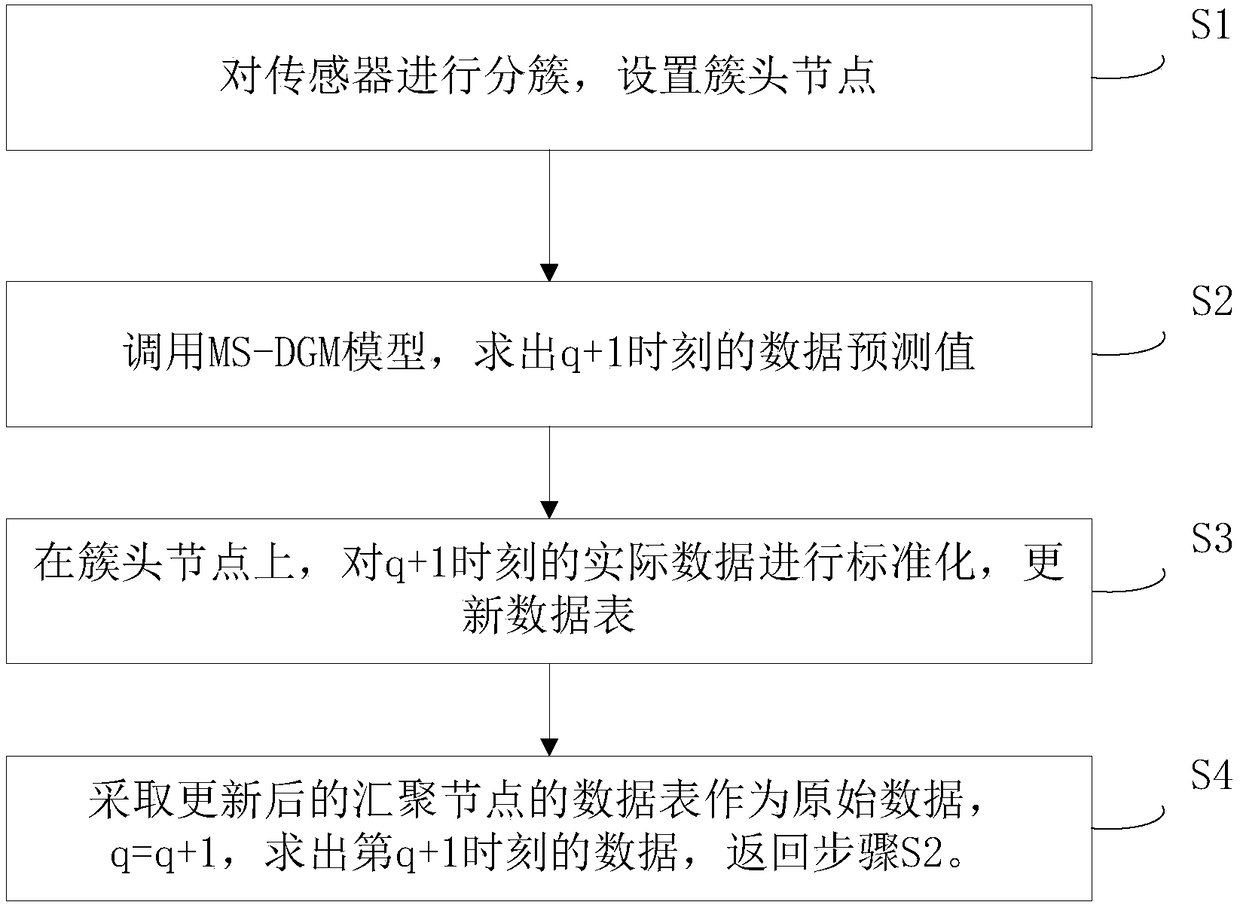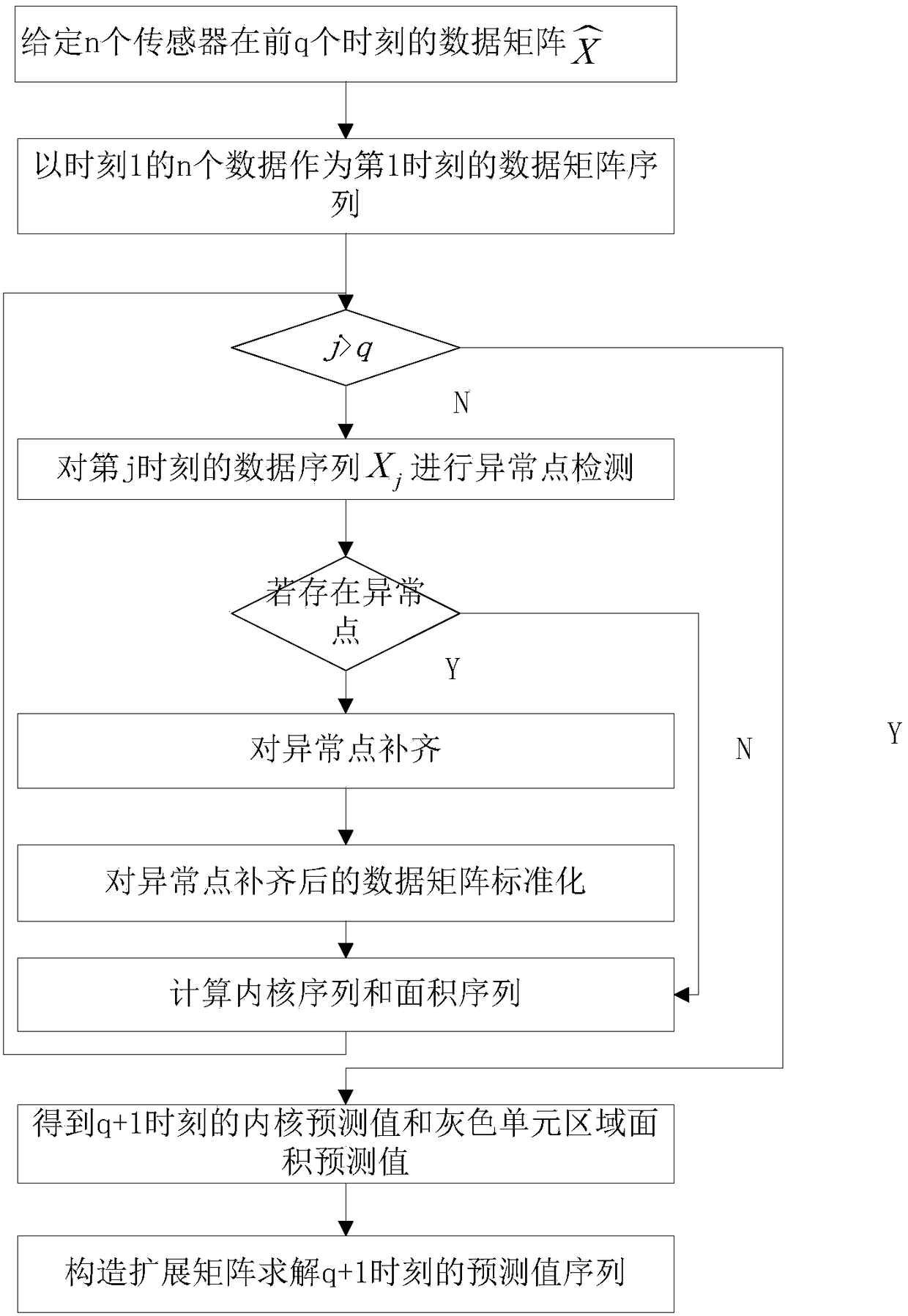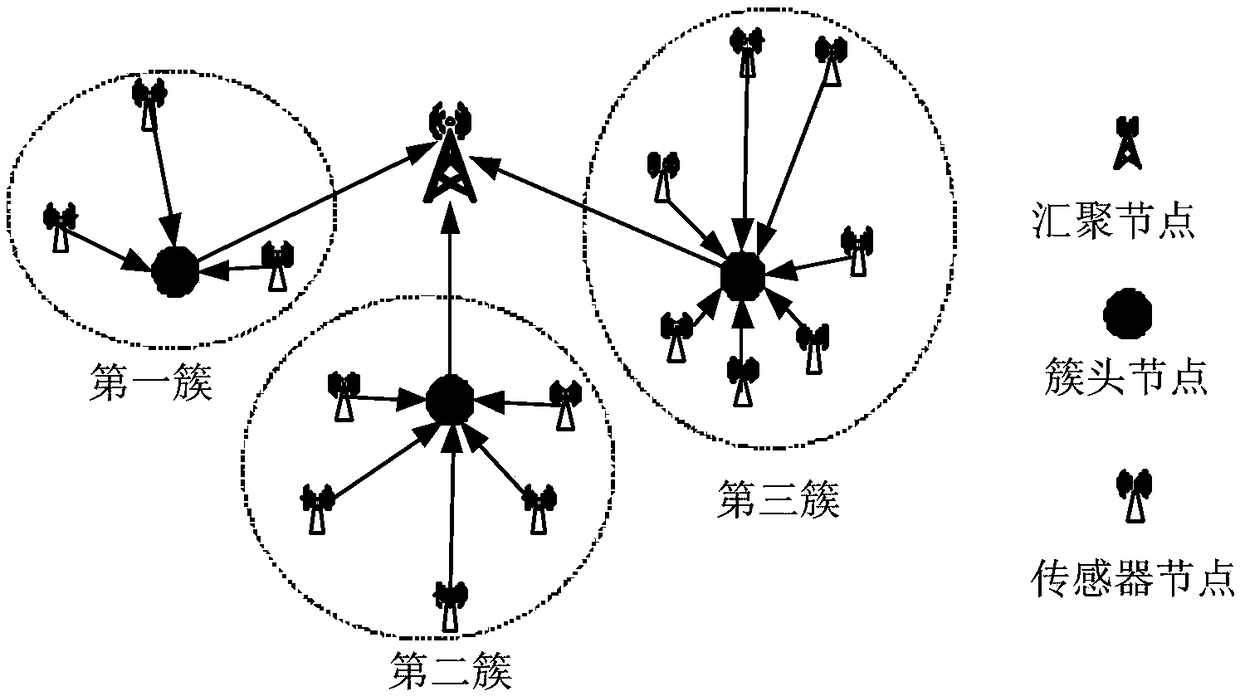Wireless sensor network data fusion method based on clustering discrete grey model (DGM)
A wireless sensor and network data technology, applied in the field of high-performance computing, can solve the problems of data transmission consumption and error reduction, time-series data spatial correlation, and insufficient consideration of uncertainty, etc.
- Summary
- Abstract
- Description
- Claims
- Application Information
AI Technical Summary
Problems solved by technology
Method used
Image
Examples
Embodiment 1
[0062] A kind of wireless sensor network data fusion method based on clustering DGM of the present invention comprises the following steps:
[0063] S11. According to the spatial position of the sensor, the sensor is clustered, and the cluster head node is set; the sensor node transmits the data collected at the first q moments to the cluster head node; the cluster head node transmits the data to the sink node;
[0064] S21. Call the DGM-based multi-sensor data fusion MS-DGM prediction model, generate a data matrix according to the original data, and obtain the data prediction value at the q+1th moment;
[0065] S31. On the cluster head node, the actual data at the q+1th moment Perform standardization to obtain the error set between the multi-sensor value at the q+1th moment and the actual data at the q+1th moment if The cluster head node sends the actual data Transfer to the sink node and update the data table of the sink node; where, Indicates the error of the i-th da...
Embodiment 2
[0115] Compared with Embodiment 1, the present embodiment has the following steps, including:
[0116] S41. Adopt the updated data table as the original data, and use the q-N+2th data to the q+1th data as the original data, q=q+1, return to step S2, N represents the number of historical data for prediction N can be the value of q in the first cycle, or a value smaller than q in the first cycle. For example, if there are data at 100 moments (q=100) in the original data, N can be 100, or Can be a value less than 100.
[0117] This embodiment can realize not only the data prediction at the q+1th time, but also the data prediction at the next q+1 time, and the data at the subsequent time.
[0118] This method can effectively detect and complement the abnormal points, improve the reliability of the data, and treat the data of multiple sensors as a whole, and use the spatial correlation between the data to correct the predicted data, effectively improving the reliability of the dat...
PUM
 Login to View More
Login to View More Abstract
Description
Claims
Application Information
 Login to View More
Login to View More - R&D
- Intellectual Property
- Life Sciences
- Materials
- Tech Scout
- Unparalleled Data Quality
- Higher Quality Content
- 60% Fewer Hallucinations
Browse by: Latest US Patents, China's latest patents, Technical Efficacy Thesaurus, Application Domain, Technology Topic, Popular Technical Reports.
© 2025 PatSnap. All rights reserved.Legal|Privacy policy|Modern Slavery Act Transparency Statement|Sitemap|About US| Contact US: help@patsnap.com



